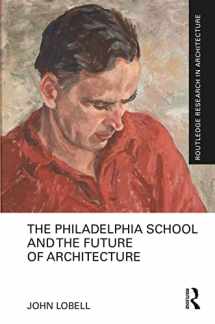
The Philadelphia School and the Future of Architecture (Routledge Research in Architecture)
Book details
Summary
Description
Flourishing from 1951 to 1965, the Philadelphia School was an architectural golden age that saw a unique convergence of city, practice, and education, all in renewal. And it was a bringing together of architecture, city and regional planning, and landscape architecture education under the leadership of Dean G. Holmes Perkins.
During that time at the architecture school at the University of Pennsylvania (known as the Graduate School of Fine Arts or GSFA), Louis Kahn and Robert Venturi were transforming modern architecture; Romaldo Giurgola was applying continental philosophy to architectural theory; Robert Le Ricolais was building experimental structures; Ian McHarg was questioning Western civilization and advancing urban and regional ecology; Herbert Gans was moving into Levittown; and Denise Scott Brown was forging a syncretism of European and American planning theory and discovering popular culture. And in the city, Edmund Bacon was directing the most active city planning commission in the country.
This book describes the history of the school, the transformation of the city of Philadelphia, and the philosophy of the Philadelphia School in the context of other movements of the time, and looks at what the Philadelphia School has to offer to architecture today and in the future, all from the point of view of a student who was there.


We would LOVE it if you could help us and other readers by reviewing the book
Book review



